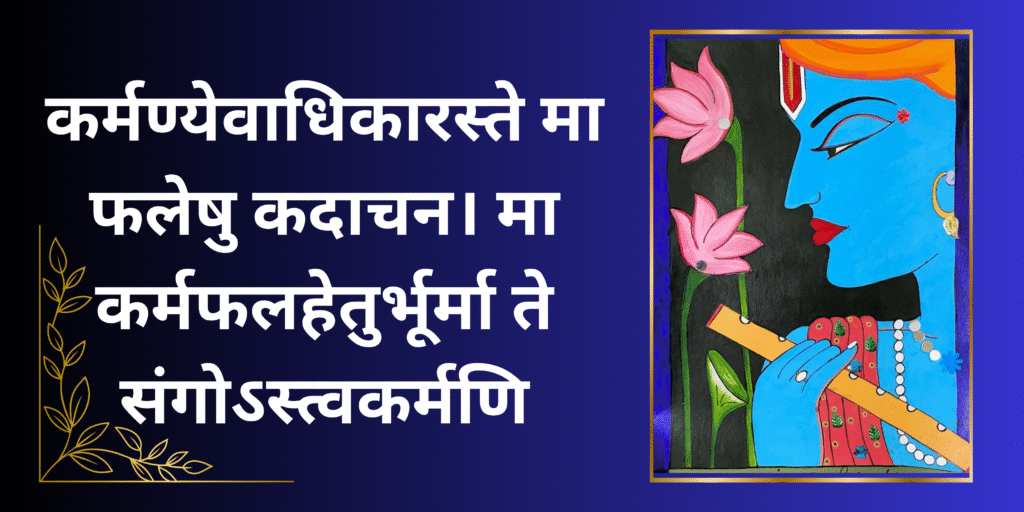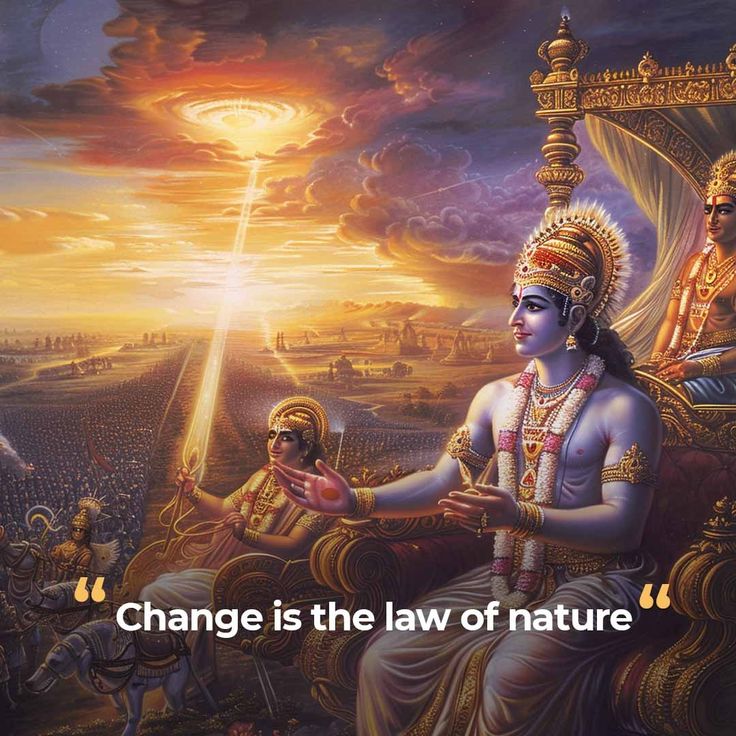
In our hyper-connected, fast-paced world, anxiety and burnout have become unwelcome companions for many. We juggle endless to-do lists, societal pressures, and the constant hum of digital notifications. The relentless pursuit of success, often defined by external metrics, leaves us feeling drained, overwhelmed, and disconnected from our inner peace.
But what if the antidote to our modern woes lies not in the latest productivity hack or mindfulness app, but in wisdom thousands of years old? The Bhagavad Gita, an ancient Indian scripture, offers profound insights into the human condition, with its concept of “detachment” standing out as a powerful balm for the anxious and burned out soul.
Understanding Detachment: More Than Just Letting Go
When we hear the word “detachment,” our modern minds might conjure images of apathy, indifference, or a withdrawal from the world. However, the Gita’s understanding of detachment (often translated as vairagya or niṣkāma karma) is far more nuanced and empowering. It doesn’t advocate for abandoning our responsibilities or becoming emotionless. Instead, it’s about cultivating a specific kind of relationship with our actions, their outcomes, and our own inner state.
At its core, Gitaic detachment means performing our duties with dedication and sincerity, but without being overly attached to the fruits of our labor. It’s about focusing on the effort, the process, and the intention, rather than becoming consumed by the desire for a particular result or the fear of failure.
Lord Krishna, the divine charioteer and speaker of the Gita, tells Arjuna:
“To work alone you have the right, and never to the fruits thereof. Do not let the fruits of action be your motive, nor be attached to inaction.” (Chapter 2, Verse 47)

This isn’t an endorsement of laziness; quite the opposite. It’s a call to conscious, committed action, free from the shackles of expectation.
The Modern Dilemma: Attachment as the Root of Suffering
Consider the modern individual. We are often intensely attached to:
- Outcomes: We tie our self-worth to promotions, salary increases, social media likes, or the success of a project. When these outcomes don’t meet our often-inflated expectations, we experience disappointment, frustration, and self-doubt.
- Approval: The need for external validation drives much of our behavior. We fear judgment, criticism, and not being “good enough,” leading to constant self-monitoring and a performance-driven existence.
- Identity: We often define ourselves by our roles (employee, parent, friend) or our achievements. When these roles shift or achievements falter, our sense of identity can crumble, leading to an existential crisis.
- Control: We strive to control every aspect of our lives, from our schedules to other people’s opinions. When life inevitably throws us curveballs, our inability to control them triggers immense anxiety.
These attachments create a fertile ground for anxiety and burnout. We constantly chase external validation, leaving us feeling like hamsters on a wheel, never quite reaching a lasting sense of satisfaction. The fear of not achieving, not being enough, or losing what we have, becomes a heavy burden.
How Detachment Offers a Path to Freedom

The Gita’s wisdom on detachment provides a powerful antidote to these modern attachments:
1. Releasing the Burden of Outcomes
When we truly grasp the concept of “action without attachment to fruits,” a tremendous weight is lifted. We still strive for excellence, we still set goals, but our inner peace is no longer contingent on whether those goals are perfectly met. We learn to accept that some factors are beyond our control. This doesn’t mean we don’t feel disappointment, but it prevents that disappointment from spiraling into debilitating anxiety or self-blame.
Imagine a project at work. An attached mindset might lead to sleepless nights, obsessive worry about every detail, and crushing disappointment if the project doesn’t pan out exactly as hoped. A detached mindset, on the other hand, allows you to pour your best effort into the project, learn from the process, and then gracefully accept the outcome, whatever it may be.
2. Cultivating Inner Stability
Detachment fosters an inner stability that is not easily swayed by external circumstances. When our happiness and self-worth are tied to external factors, we are constantly tossed about by the tides of success and failure, praise and criticism. Detachment helps us anchor ourselves in our own intrinsic worth and the sincerity of our actions.
This inner stability is crucial in preventing burnout. Burnout often arises when we’ve been pushing ourselves relentlessly, driven by external pressures, until our internal resources are completely depleted. Detachment helps us create boundaries, understand our limits, and act from a place of genuine purpose rather than desperate striving.
3. Enhancing Focus and Presence
Paradoxically, detachment can lead to better performance. When we are not consumed by anxiety about the future outcome or dwelling on past failures, our minds are freed to be fully present in the task at hand. This enhanced focus allows us to perform with greater clarity, creativity, and efficiency.
Think of an athlete. If they are solely focused on winning and terrified of losing, their performance might be hampered by nerves. If they focus on the execution of their technique, being fully present in each moment of the game, their chances of performing optimally increase significantly.
4. Reducing the Fear of Failure
One of the biggest drivers of anxiety and inaction is the fear of failure. Detachment reframes failure not as an indictment of our worth, but as an opportunity for learning and growth. If the outcome is not the primary measure of our success, then “failure” becomes less threatening. It’s simply a result that guides future action, rather than a personal defeat.
5. Embracing Impermanence
The Gita constantly reminds us of the impermanent nature of life, success, loss, joy, and sorrow. When we truly internalize this, our grip on things loosens. We appreciate moments of joy without desperately clinging to them, and we navigate challenges with the understanding that they, too, shall pass. This acceptance of impermanence is a powerful antidote to the anxiety that arises from trying to make everything static and predictable.
Practical Steps to Cultivate Detachment

So, how can we integrate this ancient wisdom into our modern lives?
- Identify Your Attachments: Take some time for self-reflection. What outcomes, opinions, or possessions are you most attached to? How do these attachments fuel your anxiety or lead to burnout?
- Focus on Effort, Not Outcome: Before starting a task, mentally commit to giving your best effort, but also consciously release the need for a specific result. Remind yourself that your worth is not tied to the outcome.
- Practice Mindful Action: Engage fully in whatever you are doing, whether it’s work, a conversation, or a chore. Bring your complete attention to the present moment, rather than letting your mind wander to future worries or past regrets.
- Embrace “Process Over Product”: In creative endeavors, learning new skills, or even daily routines, find joy in the process itself. Celebrate small steps and continuous improvement, rather than solely fixating on the final “product.”
- Cultivate Self-Compassion: When things don’t go as planned, or you experience setbacks, be kind to yourself. Recognize that you are human, and that imperfections are part of the journey.
- Seek Deeper Purpose: Connect your actions to a larger purpose that extends beyond personal gain. When your work feels meaningful, the desire for external rewards often diminishes, and intrinsic satisfaction grows.
- Mindful Disengagement: Periodically disconnect from digital devices and external stimuli. Create space for quiet reflection and allow your mind to rest from the constant demands of the outside world.
- Regular Reflection: At the end of each day or week, reflect on your actions. What did you do well? What could be improved? Did you act with attachment or detachment? This practice builds self-awareness.
Conclusion: A Path to Inner Freedom
The Bhagavad Gita’s wisdom on detachment is not an escape from life, but an embrace of it – a way to live more fully, authentically, and peacefully. In a world that constantly pulls us outwards, demanding our attention and attachment, this ancient teaching offers a profound path inwards. By learning to perform our duties with dedication but without being enslaved by their results, we can liberate ourselves from the shackles of anxiety and burnout, finding a deep and lasting serenity that truly cures the modern soul.
Embrace the wisdom of the Gita, and reclaim your inner peace.
write a blog of around 1000 words for niranjanaworld.com which is a wellness website, on the following topic
Is your smartphone controlling your mind? Using Vedanta to reclaim your focus and inner peace.


